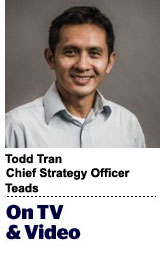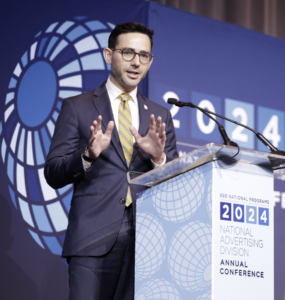 “On TV And Video” is a column exploring opportunities and challenges in programmatic TV and video.
“On TV And Video” is a column exploring opportunities and challenges in programmatic TV and video.
Today’s column is written by Todd Tran, chief strategy officer at Teads.
Although viewability has been a big topic for the past couple of years, the standard for viewability of video ads is still hotly debated.
Most of the market follows the Media Rating Council’s definition of viewability, which is that the video ad must have 50% of its pixels in view for at least two seconds. However, many advertisers and agencies, such as Group M, demand stricter standards for their video spend: more than two seconds in view.
What is the right standard? The answer is based on two realities.
First, what is the creative? Does it demand that a user sees more than two seconds to have any value? How many seconds?
Second, what is realistic, in terms of what we can expect the user to see? In digital, especially mobile, expecting the user to see all 30 seconds of a typical TV ad on a digital screen is not always realistic. There are many cases of great content that will engage the user for 30 seconds, but in many cases, this is difficult.
Value Of The Creative
Does video ad creative have any value when viewed for only two seconds? That depends.
Two seconds of video can say something and include the brand if the creative is designed or edited as such. One can even argue that it’s similar for TV.
Many times, I catch the first couple of seconds of an ad before changing the channel or diverting my attention elsewhere but I still know what brand it is or remember the ad from previous exposure. It’s similar to a glimpse of a print or outdoor ad except it’s richer because it’s video.
Today, many creatives are designed to not display the brand or association to the brand or message in the first couple of seconds, in which case two-second viewability does not have much value in the first exposure. However, it may still have value in subsequent exposures if you’ve seen the ad in full before and remember the brand and the message.
Second – and this is a more important question than the first – what can we realistically expect the user to view? In an increasingly digital world, expecting the user to see all 30 seconds of a typical TV ad on a digital screen all the time is unrealistic. I would argue that not many viewers on TV watch an ad at all when it is broadcasting – they either change the channel or switch their attention to something else, such as a bathroom break or scrolling on their mobile phone. There are of course exceptions where the content is very engaging.
For this reason, when advertisers use a stricter viewability standard while layering on audience targeting, they often struggle to get enough scale. I often see advertisers relax the viewability standard in a campaign to achieve the scale they need.
A Different Approach
In a world where consumer attention is much more fleeting than before, we have to change our approach and our expectations.
I recommend that marketers accept that most consumers will not watch ads in full. In my experience, the average viewability rate is only about 50% for two seconds in view. Marketers should develop or edit creatives where the first few seconds have value.
Subsequent exposures to an ad a consumer has already seen before have value even for a few seconds. Thirty-second ads can still be developed as long as they also have value if seen for a few seconds. Even better, develop creatives that hook the user and inspire them to watch more.
Do not force users to watch videos in their entirety. They will develop negative feelings toward the brand and may install ad blockers. Give them the option to skip.
Run video ads on quality publications, especially publishers with professionally produced editorial content. These publishers have much higher viewability rates and lower fraud. Many advertisers still buy in low-quality video ad exchanges to buy cheap and achieve scale. However, when you look at the fraud rates and low viewability rates, it simply doesn’t pay off and may associate the brand with low-quality content.
Reset Expectations
The two-second viewability standard is rooted in the reality of the modern world where the fickle consumer switches their attention often. But if marketers must set stricter standards, they need to be realistic about scale and reach.
With digital devices, especially mobile, video ads can be so much more powerful than TV ads in that they are interactive and more multidimensional. We need to take advantage of the new features available to us in the digital world to make video ads more effective.
We are no longer in the 1950s when everyone sits in front of the TV and watches ads in their entirety. TV now has hundreds of channels consumers can switch to, and there is a plethora of other devices they can divert their attention to when an ad is playing. There is still a lot of value in video ads but we must adapt to modern realities.
Follow Teads (@Teads) and AdExchanger (@adexchanger) on Twitter.













